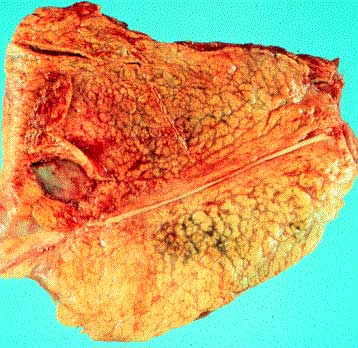 Veterinary
Pathology - Nutritional Pathology
Veterinary
Pathology - Nutritional Pathology
Introduction
Mullberry Heart Disease:
In young pigs Vitamin E /selenium deficiency may present as necrosis of the myocardium and subsequent acute heart failure.
The heart has alternately pale and dark blotchy to streaky
discolouration which relate to areas of necrosis and haemorrhage respectively.
There may also be acute oedema of the lungs with pleural effusion.
Histologically haemorrhage, myocardial necrosis with mineralisation are seen.
White Muscle Disease:
Resulting from a vitamin E +/- selenium deficiency, this disease most
often affects the young. Common in areas of selenium deficient soil.
WMD results in a diffuse cardiac necrosis which is seen grossly as pale
lesions on the epicardial surface. Histologically fibres appear swollen
and hypereosinophilic (hyaline necrosis). The striations become indistinct
and the nuclei pyknotic. Nectrotic fibres aften have basophilic granules
that are the result of mitochondrial accumulation of calcium salts (Von
Kossa stain for calcium).
The underlying cause of the disease extends from the
fact that without the anti-oxidant activities of selenium and vitamin
E to help preserve the stability of the cellular membrane, oxygen radicles
and other compounds oxidise the lipids and lead to defects forming in
the cell membranes. In muscle cells this allows calcium to flow freely
into the cell and it is the toxic affects of calcium which ultimately
kills the cell.
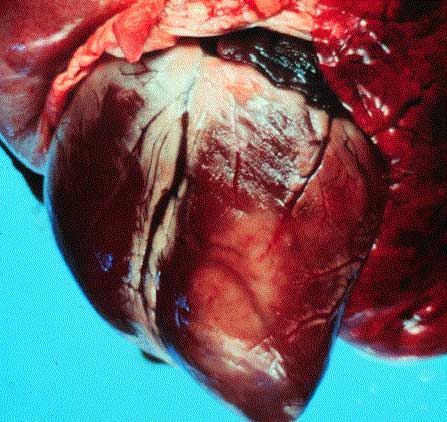
The heart may be affected with mulberry heart disease or can develop typical lesions of white muscle disease.
Pallor develops in the myocardium due to the necrosis
and also accumulation of calcium salts in the muscle, leading to white
chalky areas of necrosis with mineralization.

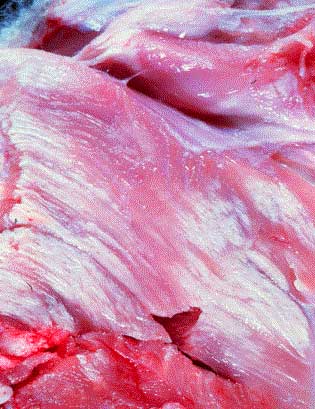
Note the hyalinized appearance of the necrotic region of muscle.
Other Se/Vit E related disorders:
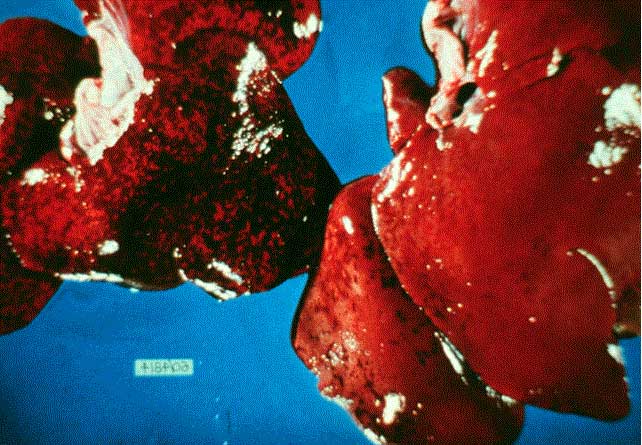
Hepatosis dietetica
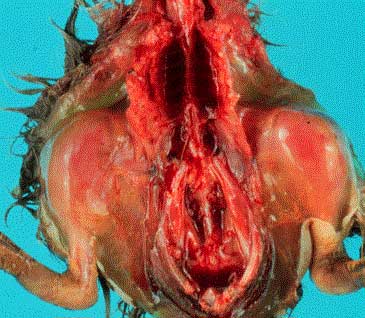
Exudative diathesis
